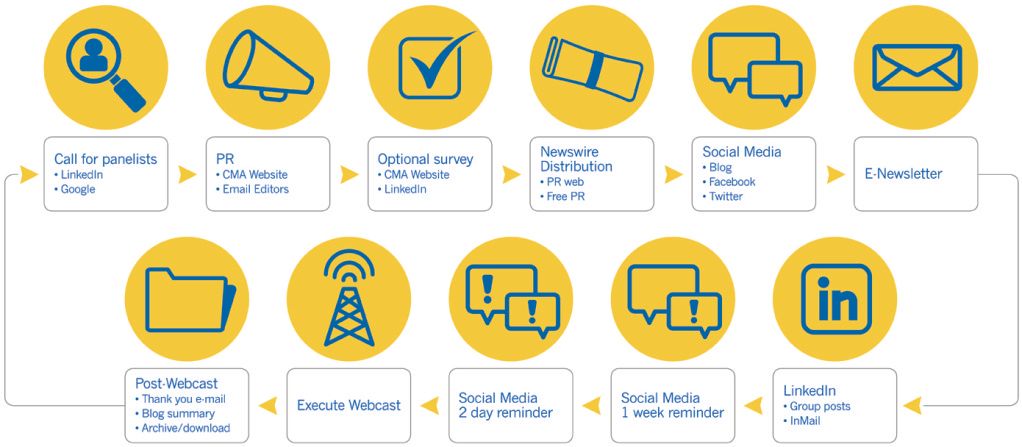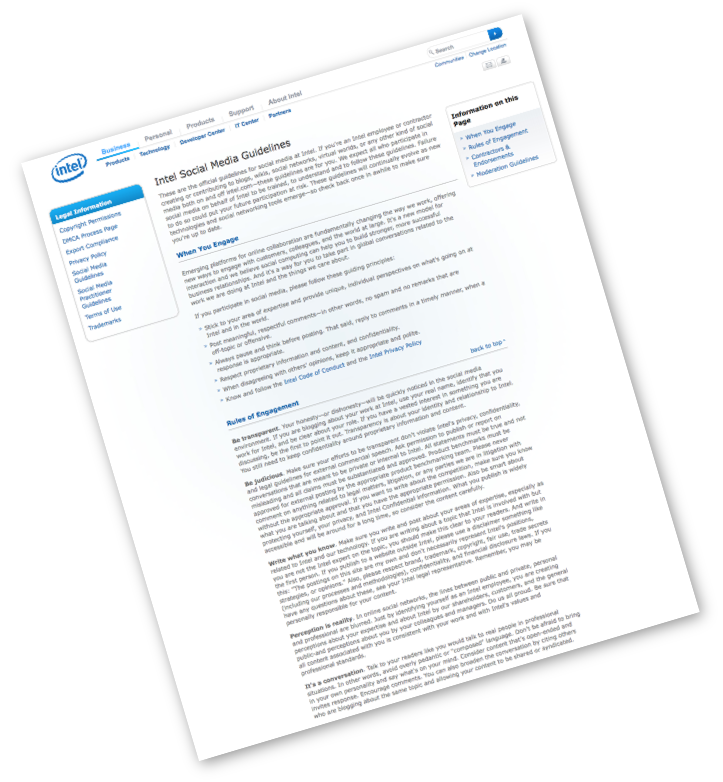
 The importance of social media in the construction industry continues to grow, with more and more examples of companies and brands realizing financial results. The promise of social media is improved search engine results, increased website traffic, real interaction with customers and prospects, and ultimately, measurable revenue generation. In addition, a huge opportunity exists to unleash employees, and involve staff as brand ambassadors to amplify your social media initiatives.
The importance of social media in the construction industry continues to grow, with more and more examples of companies and brands realizing financial results. The promise of social media is improved search engine results, increased website traffic, real interaction with customers and prospects, and ultimately, measurable revenue generation. In addition, a huge opportunity exists to unleash employees, and involve staff as brand ambassadors to amplify your social media initiatives.
As we have all experienced, social media takes a great deal of time. So gaining the support of a “small army” of brand ambassadors is intuitively appealing, but not without issues or problems that can be minimized with guidelines and training. To that end, following are 5 Tips for Social Media Training in your organization.
- Create a company social media policy guide
- Seek, recruit and develop thought leaders as editors
- Develop a social media plan
- Conduct staff training
- Ongoing communications and reporting
A Social Media Policy?
Depending on the the scope of your organization, a simple to extensive social media policy will provide guidelines to staff AND partners to ensure corporate and/or brand objectives. A social media policy will also Ensure messaging and tone are consistent. In addition, dealing with negative situations and unprofessional conduct can be defined, including disciplinary actions. The policy can also serve as a training vehicle with detail on corporate and brand social media assets and procedures. Below is a sample guide for Intel.
Below is a link to policies for hundreds of corporations:
http://socialmediagovernance.com/policies.php
Recruit Social Media Editors
The new media revolution has transformed marketers and other employees into authors and publishers. While marketing, communications and PR staff have always participated in content development, ideally a broader social media program will recruit and leverage thought leaders and subject matter experts across the enterprise. Content is king in social media and thought leadership can come from engineers, executives, and yes, even sales people (we have to take a stab when we can). Ideally, marketing assumes the role as managing editor, guiding content strategy, editorial calendars and assignments. Which leads us to the next tip, planning.
Develop a Social Media Plan
Like all marketing plans, goals and objectives should be defined. We suggest both overall objectives, and specific goals for each of the top social media platforms including blogs, LinkedIn, Facebook, YouTube and Twitter. Some of the obvious objectives are Fans and Followers, however, keep in mind that quality is more important than quantity.
A basic part of planning is benchmarking or evaluating other companies and brands social media. Certainly evaluate competitors, but also analyze those brands recognized for best practices. Obviously you want to deploy social media better than competitors, and understand what some great new ways to leverage the different platforms for marketing results.
Developing and managing content is one of the biggest undertakings with social media, so assigning a social media project leader or managing editor is critical. This person should bring together key thought leaders and subject matter experts for brainstorming, planning and scheduling. This person should publish a detailed content schedule, remind and coordinate content for all platforms. Ideally, the plan will coordinate social media integration across platforms. As an example, note how a single marketing initiative like a webcast involves multiple communications and social platforms in the flow chart below. Which leads us to the next tip, training.

Conduct Social Media Training
So you have recruited the dream team of subject matter experts (SMEs) who likely have little (or zero) editing or social media experience. Both content and social media platform training will be required. Not to mention, you still want to enlist the small army of brand ambassadors that are your employees to comment, Retweet, Like and bookmark corporate blogs, posts and Tweets.
First, conduct platform-specific training including Blogs, LinkedIn, Facebook, YouTube and Twitter. Detailed training for your editor team and basic training for employees. Following are some specific training considerations for each social platform.
Blogs
- Train SMEs and employees how to Retweet blogposts
- Train SMEs and employees how to Facebook Like blogposts
- Train SMEs and employees how to bookmark blogposts including Digg, Delicious, etc.
- Train SMEs and employees how to comment on blogposts
- Train employees how to link corporate website, blog and Twitter to their individual profiles
- Train employees how to list company, brand, industry and partner events via the EVENT application on their profiles
- Train employees how to upload company SlideShare presentations converted from brochure PDFs or Powerpoint presentations to their individual profiles
- Train employees how to link their profiles to the company page
- Train employees how to add LinkedIn connections, along with tips for business development
- Train employees how to join up to 50 LinkedIn groups, and provide guidelines for group discussion posts
- Train employees how to use InMails to communicate thought leadership, offers and programs to their respective connections
- Train SMEs and employees how to set-up their personal Facebook profile.
- Train SMEs and employees how to Like the Facebook business page
- Train SMEs and employees how to comment on Facebook business page posts
- Train SMEs and employees how to post updates and share content on the Facebook business page
- Train employees how to find relevant customers and prospects and engage them on Facebook
YouTube
- Train SMEs and employees how to set-up their individual YouTube accounts
- Train employees how to view company YouTube videos
- Train employees how to comment on company videos
- Train employees how to share and embed company videos
- Train SMEs and employees how to set-up their Twitter profiles
- Train SMEs and employees how to Follow relevant Twitter profiles
- Train SMEs and employees how Tweet and Retweet content including URL shorteners and hashtags (#)
- Train SMEs and employees how to use external programs and applications including HootSuite, TweetDeck, WeFollow, etc.
Ongoing Communications and Reporting
Communicating social media activities, measures and successes is key to building interest and participation among employees and key contributors, while building management support. Providing frequent reporting and sharing successes will create enthusiasm. Depending on the scale of your enterprise, weekly or monthly reporting may be sufficient. Such reporting can be combined with ongoing training programs. Recognizing individuals contributions is another key aspect to these group meetings.
Measuring results of your social media program includes the metrics of individual platforms, which we cover in our blogs for each platform. In addition, website traffic and analytics should be included. Finally, social media monitoring tools like Radian6 that measure conversations across the Internet should be used.
Now, go train someone!
Want to know more about the Construction Marketing Association? CLICK HERE.


Enjoyed reading it. Great job. It has shown me new directions. Thanks
social media expert